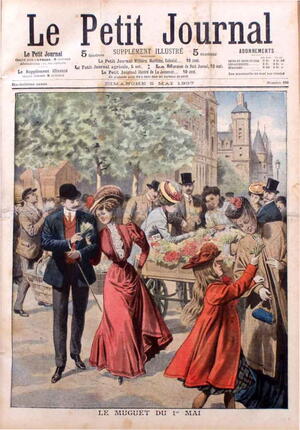"Premier Mai"—red flags and white lilies
On the first of May in France everything comes to a halt. Newspapers no longer roll off the presses, and schools, businesses, factories, local stores, and government offices all close for the day.
The holiday, which most countries adopted as "Labour Day," has its origins in the history of the American workers movement. On 1 May 1886, in Chicago, hundreds of thousands of workers went on strike to demand the adoption of a standard eight-hour workday. The riots that ensued were particularly violent and resulted in several deaths, both on the police side and on the demonstrators' side. May Day was established by the European trade unions to commemorate these tragic events and later evolved into a celebration of labour and workers.
Since the early days of May coincide with the flowering of lilies of the valley, the flower soon became associated with the celebration. It is a tradition in France to offer small bunches of "muguet" to friends and loved ones. Up until recently, porters at the Halles market in Paris would walk in their traditional costume to the Elysées Palace and present lilies of the valley to the President of the French Republic.
But first and foremost, "Premier Mai" is a day for massive and peaceful demonstrations in France. This Friday, the "Premier Mai" should be exceptionally "unitaire"—which means that, for once, all the main trade unions will march together through the cities' streets.



